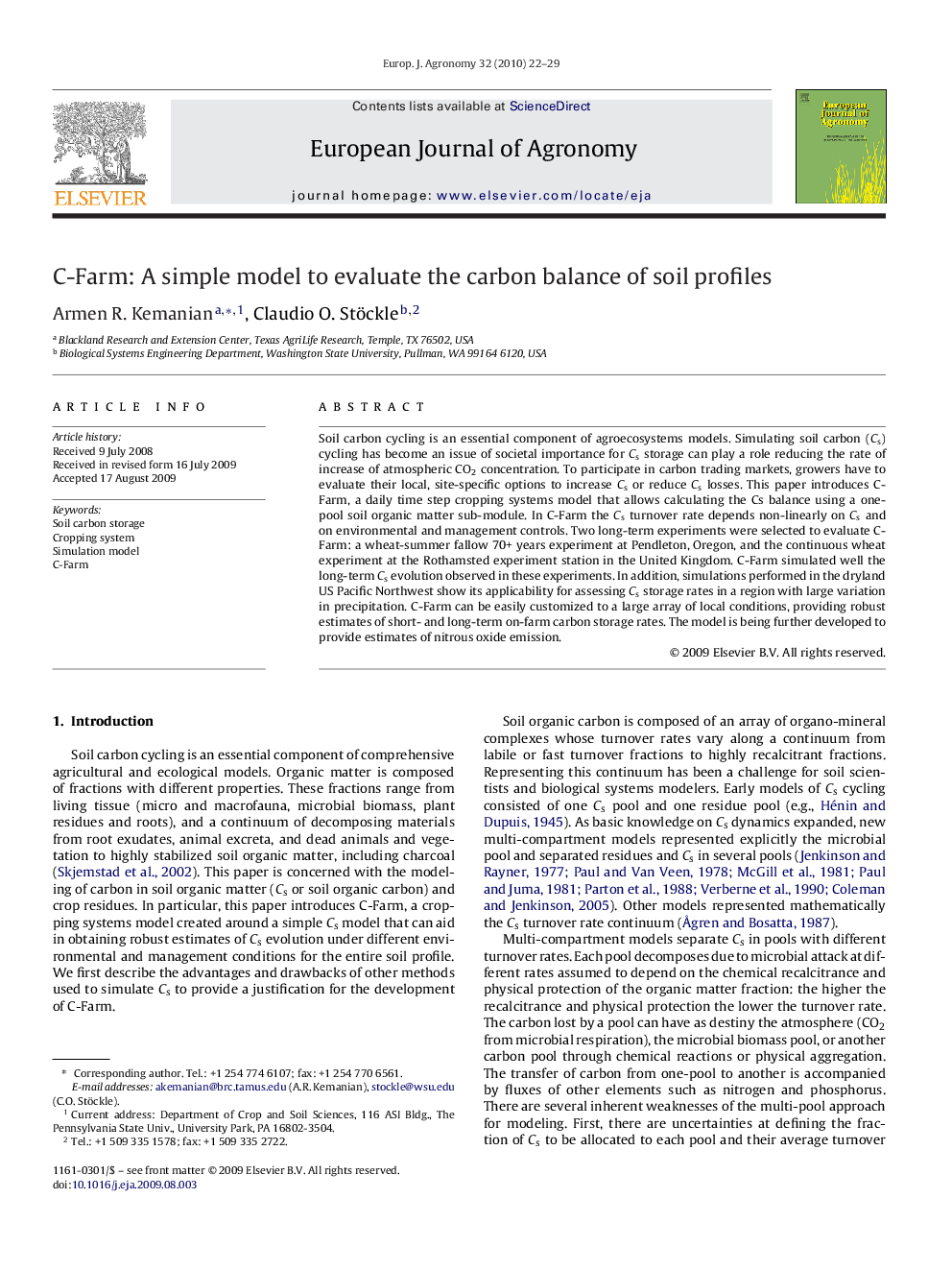| Article ID | Journal | Published Year | Pages | File Type |
|---|---|---|---|---|
| 4509308 | European Journal of Agronomy | 2010 | 8 Pages |
Soil carbon cycling is an essential component of agroecosystems models. Simulating soil carbon (Cs) cycling has become an issue of societal importance for Cs storage can play a role reducing the rate of increase of atmospheric CO2 concentration. To participate in carbon trading markets, growers have to evaluate their local, site-specific options to increase Cs or reduce Cs losses. This paper introduces C-Farm, a daily time step cropping systems model that allows calculating the Cs balance using a one-pool soil organic matter sub-module. In C-Farm the Cs turnover rate depends non-linearly on Cs and on environmental and management controls. Two long-term experiments were selected to evaluate C-Farm: a wheat-summer fallow 70+ years experiment at Pendleton, Oregon, and the continuous wheat experiment at the Rothamsted experiment station in the United Kingdom. C-Farm simulated well the long-term Cs evolution observed in these experiments. In addition, simulations performed in the dryland US Pacific Northwest show its applicability for assessing Cs storage rates in a region with large variation in precipitation. C-Farm can be easily customized to a large array of local conditions, providing robust estimates of short- and long-term on-farm carbon storage rates. The model is being further developed to provide estimates of nitrous oxide emission.
